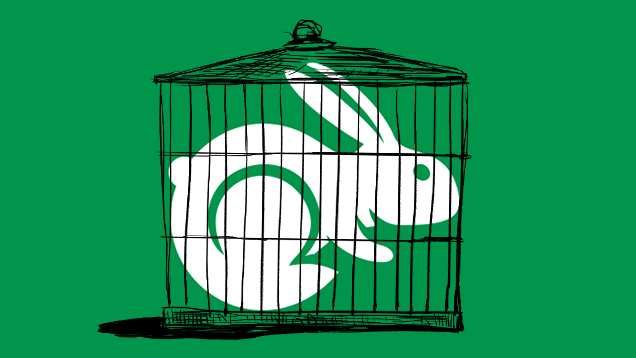In an attempt to stay relevant the BIM’s course recent subject matter, I have decided to talk about the former digital auctioneering platform: TaskRabbit. In this blog post I will briefly shed light on the company’s history, its former auctioneering system, the backlash of its cancellation and my thoughts on its current state.
TaskRabbit was founded by Leah Busque in 2008, due to her desire for a service that would enable her to pay someone within her community to buy and deliver dog food to her house. Thus, the concept of connecting service seeking neighbors with neighbors that were able to professionally provide said services was born. Originally the system operated by enabling the consumer to post a vacancy for whatever it was he or she needed, which to this day focuses on labor oriented services such as gardening, home improvement and similar fields (TaskRabbit, 2017). The consumer would indicate their maximum spending amount for the service, which leads us to this platform’s reverse auction (one buyer, multiple sellers). The platform enables local professionals to underbid one another to provide the service required, creating a positive cross-side effect resulting in the lowest possible price for the consumer while providing desirable work for local professionals. Although the company’s concept is solid, its transactions costs are still subject to operational risks, which needed to be addressed. The main operational risk presented itself in the fact that the winning service provider might misrepresent himself by appearing more qualified than he actually is, resulting in a job that is subpar which in turn reflects poorly on TaskRabbit’s platform. TaskRabbit solved this by creating the “TaskRabbit Elite”: Service providers who had received good review in previous jobs, who in doing so had established the quality of their service (Brustein, 2016).
–
In the eyes of many TaskRabbit had lived up to its potential by 2014, making their dramatic change in business model quite the surprising endeavor. The team behind TaskRabbit decided to let go of its established bidding system to make room for an on-demand service that is still in place today (Weber, 2014). Before launching this new version (TaskRabbit 3.0), the company appeared very confident and indicated that in this version they had improved upon virtually all of the application’s aspects. However, when the launch went live it was met with heavy protest from both sides. Having fixed rates meant that consumers could no longer get great deals on the services they needed, and for providers it meant that the luxury of choosing their own work was heavily restricted. Many service providers stated that their loyalty to the platform originated from their desire to pick their own jobs, giving their job a sense of diversity that they had grown accustomed to. (Perez, 2014)
–
Although TaskRabbit was originally confident that their platform would adapt these changes, the company’s popularity has suffered a heavy decline since its implementation. As of September 28th 2017, TaskRabbit has been acquired by world’s largest furniture retailer, IKEA (Taylor, 2017). IKEA aims to use the platform’s service providers to help its customer with the installation of its products.
–
Personally, I would have loved to see if TaskRabbit would have avoided its current fate if it had stayed with its original bidding system. I think things would have done very differently, do you?
–
References:
Brustein, J. (2016). TaskRabbit’s Stalled Revolution. Retrieved October 15, 2017, from https://www.bloomberg.com/news/articles/2016-12-22/taskrabbit-s-stalled-revolution
Perez, S. (2014). Following A Drop In Completed Jobs, Errands Marketplace TaskRabbit Shakes Up Its Business Model. Retrieved October 15, 2017, from https://techcrunch.com/2014/06/17/following-a-drop-in-completed-jobs-errands-marketplace-taskrabbit-shakes-up-its-business-model/
TaskRabbit, I. (2017). Revolutionizing Everyday Work. Retrieved October 15, 2017, from https://www.taskrabbit.com/about
Taylor, K. (2017). Ikea has acquired TaskRabbit – and it could fix the most annoying thing about the furniture giant. Retrieved October 15, 2017, from https://www.businessinsider.nl/report-ikea-acquires-taskrabbit-2017-9/?international=true&r=US
Weber, H. (2014). TaskRabbit users revolt as the company shuts down its bidding system. Retrieved October 15, 2017, from https://venturebeat.com/2014/07/10/taskrabbit-users-revolt-as-the-company-shuts-down-its-bidding-system/


Hey Philip,
Really interesting read! Thank you for sharing!
I agree! I think things definitely would have worked out differently from TaskRabbit had they stuck with their original bidding system but as you mentioned it did also produce problems. I’ve personally used TaskRabbit during both versions of the product and I think the experience as a customer varies from task to task; for example paying some to wait in line at the DMV for me versus paying someone to help me move out of my apartment. Perhaps the variety of tasks your TaskRabbit can do and the type has something to do with buyers’ and suppliers’ experience of the new bidding system?
Furthermore, looking at competitors to TaskRabbit like the success of Thumbtack – I’m curious what you think their system does right that TaskRabbit did not? Or if you think they will share the same fate as TaskRabbit given their booking system is similar.